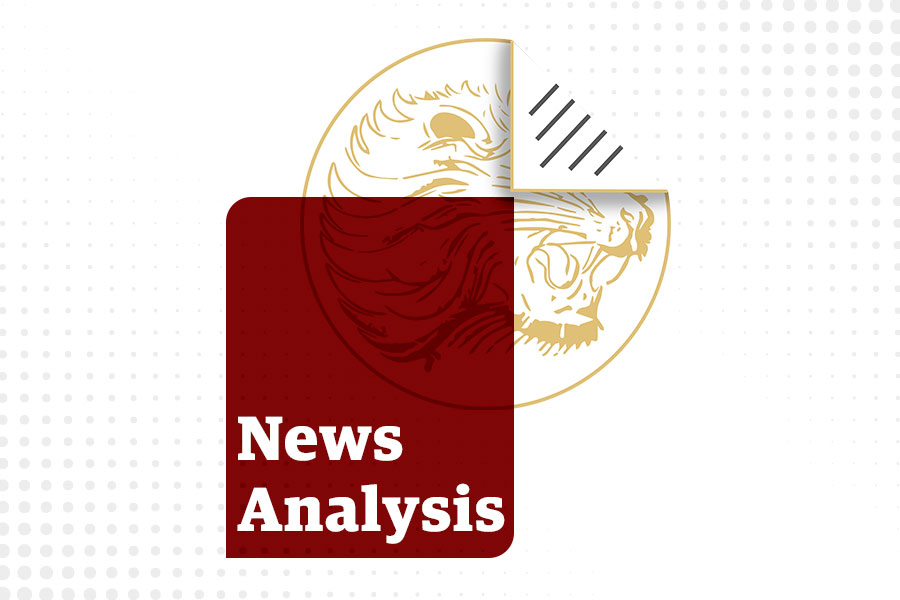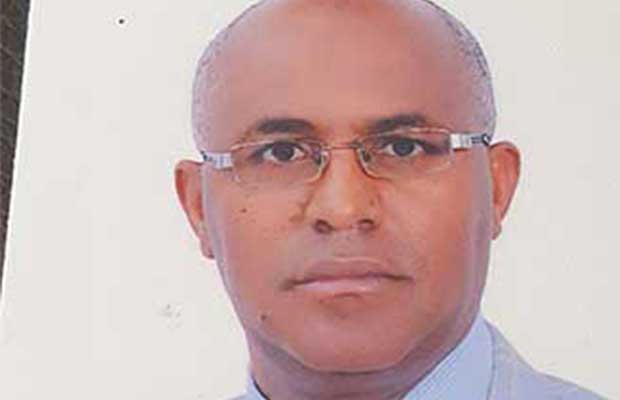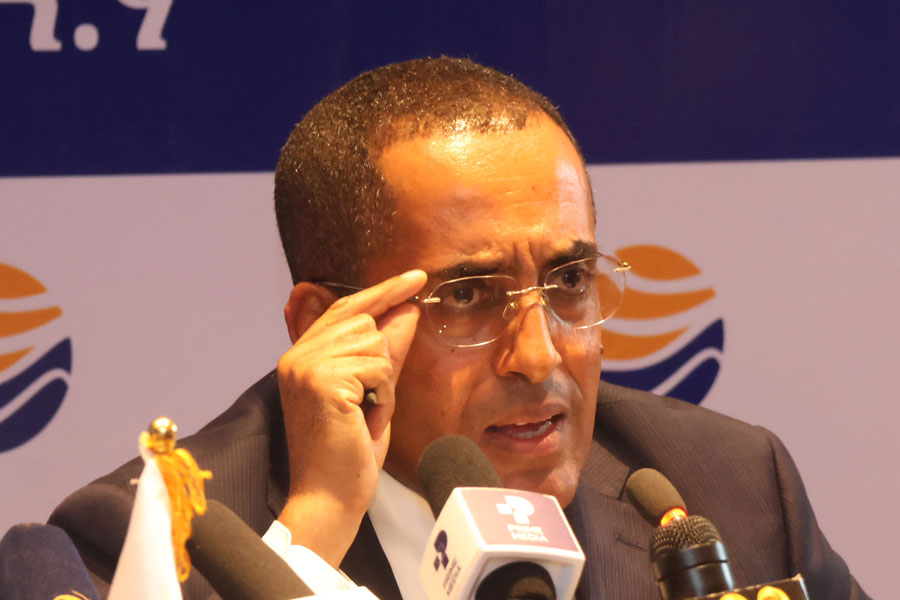
Radar | Mar 16,2019
Awash Insurance Co. flexes its financial muscle, showcasing its stability and grit amid a volatile insurance industry. Surpassing competitors like Oromia and United, the Ethiopian insurance powerhouse recorded a notable 17.7pc increase in assets to amass 4.19 billion Br. According to recent financial reports, these companies lagged behind with 2.55 billion Br and 2.16 billion Br, respectively.
Awash's substantial cash holdings of 1.6 billion Br and an additional 322 million Br in interest-bearing deposits underscore its robust financial health.
The company's vigorous fiscal performance did not shield it from a surprising dip in earnings per share (EPS). It experienced a 10 Br slide, settling at 350 Birr. Industry watchers attribute this unusual downturn to a 26.7pc hike in paid-up capital, now tipping the scale at 956.56 million Br.
Awash CEO Gudissa Legesse insists the EPS figure aligns with company expectations. He argues that the recapitalisation move is a strategic necessity, despite its impact on the EPS. However, some financial analysts express contrary views. They suggest that the insurance firm's impressive capital and non-distributable reserves - a weighty 27pc of its total assets - signal that it is a strongly capitalised entity. This should logically enable Awash to provide more substantial returns to its shareholders.
"The management needs a capitalisation policy that enhances shareholders' value," stressed Abdulmenan Mohammed, a London-based financial analyst.
Awash Insurance, which commenced operations in 1995 with an initial equity of 4.9 million Br raised from 456 shareholders, has grown its shareholder base to over 1,400. Mesfin Shiferaw, a founding shareholder, commended the company's consistent growth, challenging the executive team to uphold corporate governance principles of duty, care, oversight, and disclosure.
"These principles are also necessary when dealing with foreign companies entering the market," he told Fortune.
The CEO, Gudissa, brings over 20 years of experience to Awash, beginning as a branch manager and gradually rising through the ranks. He succeeded Tsegaye Kemsi in 2020, becoming the CEO of the company he joined after a stint as an underwriting officer at United Insurance.
Under Gudissa's leadership, the company reported 1.2 billion Br in general insurance revenues, dwarfing Oromia and United, which collected 920 million and 845 million Br, respectively. This achievement was not without costs. Employee salary and benefits, alongside administrative expenses, soared by 35.8pc to 386.9 million Br.
Despite these increased expenditures, Awash turned the tide to post a net profit of 333.9 million Br, marking a substantial 23.6pc surge compared to the previous year. The boost in underwriting surplus and investment income predominantly fuelled this growth.
A buoyant 27.5pc jump in investment income to 294 million Br was another feather in Awash's cap. Commissions received from reinsurers climbed by 39.6pc to 135.5 million Br, while payouts to agents spiked by 23.9pc to 61.45 million Br.
Amid these encouraging numbers, Awash managed to rise above the murky underwriting outcomes within the industry and a 15.7pc surge in net claims, which tallied to a massive 5.7 billion Br. Gudissa revealed that the company's strategic focus in the past year centred on increasing existing policy sales over acquiring new clients.
The insurance titan maintained a stable 61pc retention rate of the total non-life gross written premium. The underwriting surplus increased by 23pc to 405.26 million Br as the gross premium rose by 38.6pc to 1.76 billion Br, despite ceding 36pc to reinsurers.
United and Oromia were hot on Awash’s heels, recording premiums of 845 million and 920 million Br, respectively. Together with Awash, these companies made up more than half of the total premiums amassed industry-wide. Meanwhile, Nib Insurance demonstrated strong growth with a 30.3pc rise in premium collection.
New market entrant, Tsehay Insurance, showcased an impressive increase in its market share, expanding by 1.2 percentage points to reach 3.8pc, indicating its growing acceptance among consumers. Lion, Buna, and Nyala insurance firms also evidenced robust growth, demonstrating the industry's untapped potential in spite of constant challenges.
Other companies showcased remarkable growth, with Zemen Insurance leading the pack through a colossal 208pc premium jump. This was closely followed by Berhan Insurance and Oromia Insurance, which witnessed growth rates of 37.5pc and 40.67pc, respectively. Africa Insurance experienced a decline in the premium collection from the previous year. A handful of firms like Nice, Abay, Global, Ethio-Life, Berhan, and Lucy lagged behind, occupying a smaller market share.
The industry’s underwriting outcomes painted a convoluted picture. Net claims incurred rose by 15.7pc to a whopping 5.7 billion Br, nudging the net claims ratio to 61.3pc, a mild increase from the prior year. According to industry insiders, the Birr's continuous depreciation against major currencies, which led to inflated costs for imports and vehicle maintenance, was likely responsible for this uptick.
Awash`s Branch Manager, Deme Berhanu, highlighted how foreign currency shortages and liquidity crunch hampered commercial banks in opening letters of credit and disbursing loans to businesses as optimally as desired, leading to lower demand for marine and mortgage policies in the insurance sector.
Despite these challenges, the industry saw a 42.1pc surge in net investment income, crossing the billion Birr mark. Conversely, the overall net profit after tax experienced a dip of 12.9pc to settle at 1.51 billion Br compared to the previous year.
Awash demonstrated market leadership with an 8.2pc share, outstripping Oromia and United's six percent and 5.5pc shares, respectively. This trio led the insurance industry, which displayed solid growth in the last fiscal year, overshadowing the remaining 14 private firms in both premium collection and market share.
However, the insurance penetration rate of 0.7pc lags considerably behind the African average of 2.9pc. Awash’s stellar performance is exemplified by its collection of the highest premium of 1.25 billion Br, representing 0.9pc of the industry's gross premiums for fiscal 2021/22, a 15pc increase year-over-year.
The major driver behind this rise was motor insurance, contributing 40.4pc of premiums. Medical insurance and aviation insurance followed. Surprisingly, crop, coffee, and livestock insurance, critical to the Ethiopian economy, made a negligible 0.4pc contribution. The industry, it appears, still has plenty of room for expansion and adaptation in an economy with strong agricultural underpinnings.
PUBLISHED ON
Jun 10,2023 [ VOL
24 , NO
1206]

Radar | Mar 16,2019


Fortune News | Dec 02,2023

Fortune News | Apr 22,2023

News Analysis | May 04,2024

Radar | Jul 15,2023

Radar | Sep 27,2020

Exclusive Interviews | Jan 05,2020

Fortune News | Jul 06,2025

Viewpoints | Mar 20,2021

Dec 22 , 2024 . By TIZITA SHEWAFERAW
Charged with transforming colossal state-owned enterprises into modern and competitiv...

Aug 18 , 2024 . By AKSAH ITALO
Although predictable Yonas Zerihun's job in the ride-hailing service is not immune to...

Jul 28 , 2024 . By TIZITA SHEWAFERAW
Unhabitual, perhaps too many, Samuel Gebreyohannes, 38, used to occasionally enjoy a couple of beers at breakfast. However, he recently swit...

Jul 13 , 2024 . By AKSAH ITALO
Investors who rely on tractors, trucks, and field vehicles for commuting, transporting commodities, and f...

Oct 25 , 2025
The regulatory machinery is on overdrive. In only two years, no fewer than 35 new pro...

Oct 18 , 2025
The political establishment, notably the ruling party and its top brass, has become p...

Oct 11 , 2025
Ladislas Farago, a roving Associated Press (AP) correspondent, arrived in Ethiopia in...

Oct 4 , 2025
Eyob Tekalegn (PhD) had been in the Governor's chair for only weeks when, on Septembe...